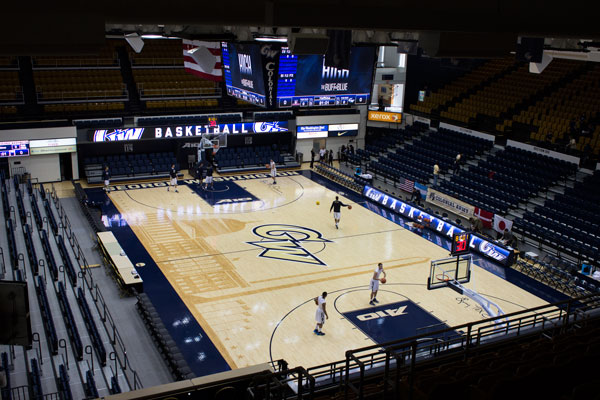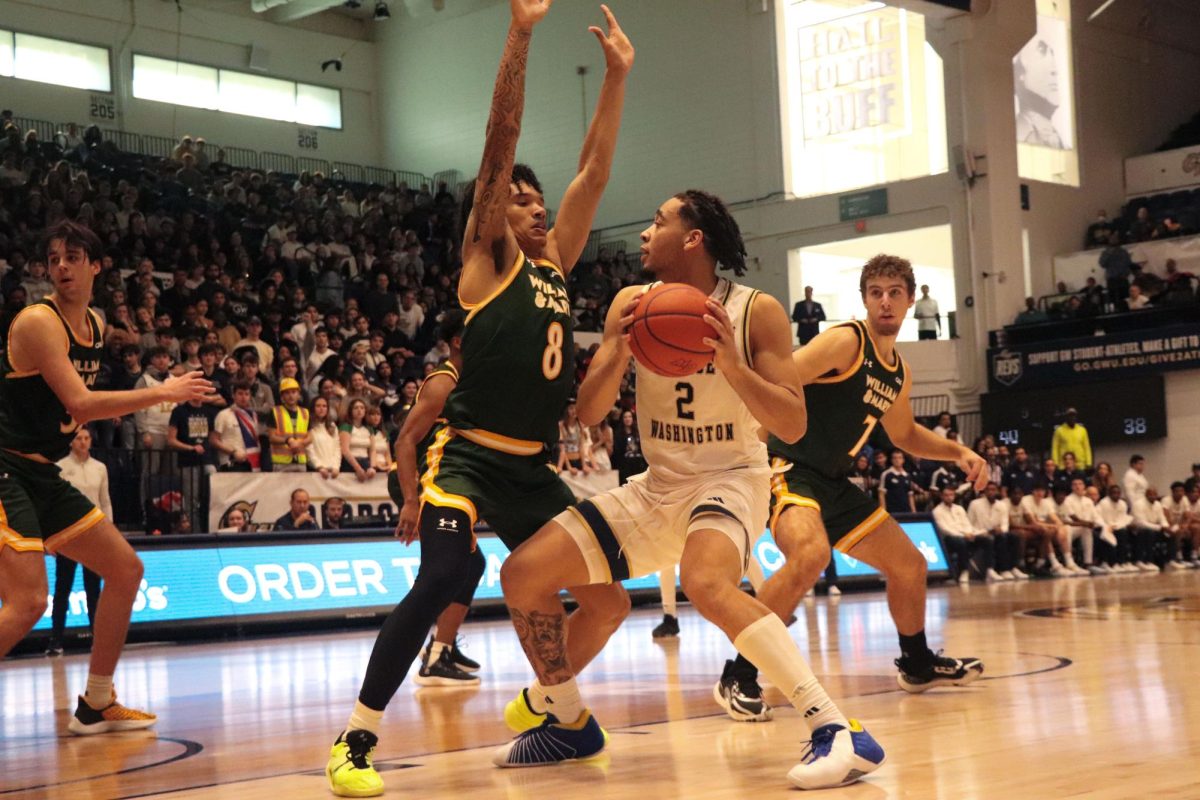The men’s tennis team that won its second straight Atlantic 10 tournament Sunday benefited from a nearly $50,000 budget increase over the last five years, and next month, the baseball team will host a conference championship on a field built with a trustee’s donation.
Meanwhile, budgets are being slashed 5 percent across campus. That goes for the athletic department budget, too, but athletic director Patrick Nero said the department can cover the cuts and keep growing because it can do something that others can’t: bring in outside revenue.
“Our revenues are significantly up and new revenues helped cover our 5 percent cut so that it’s not going to impact our students,” Nero said. “We’ve been able to make sure that our budget cuts will have very little impact on the students.”
Athletics communications director Brian Sereno said that the department’s five-year projections through the end of this fiscal year show revenues increasing by more than 70 percent from several areas including ticket sales, larger media contracts, payouts from participation in the NCAA Tournament and growing philanthropy to the athletic department.
Nero said the athletic department’s 5 percent cut was in “administrative” areas. No staff members were laid off, but some vacant positions were eliminated and Sereno said that the department “may have to revisit the situation in the future.”
Since Nero arrived at GW in 2011, the athletic department has had some of its best years in program history. Both basketball teams have been to the NCAA Tournament, programs like gymnastics have won league titles and facilities have been improved in Foggy Bottom and on the Mount Vernon Campus.
The department has also seen its budget grow through University support: In 2012, the Board of Trustees approved the athletic strategic plan, which involved committing resources to bring the athletic department budget from the bottom of the Atlantic 10 conference to the top third.
The athletic department declined to provide the amount of money the Board committed, but the budget grew about 24 percent between fiscal year 2012 before the plan, to about $25 million in fiscal year 2013 after the plan was released.
In total, the department’s budget has grown from about $20 million in fiscal year 2012 to nearly $28 million in fiscal year 2014, according to data from the Department of Education.
It’s not clear whether that additional $2.7 million jump was due to more University support, increased revenues or philanthropy. But Nero said GW has essentially maxed out its commitment, and further growth will have to come from other sources.
“We’ve reached our level of where we are today because of the commitment of our Board of Trustees four years ago or three years ago, but all of us, including the trustees, have further goals,” Nero said.
In order to see substantial budget growth from outside sources, the athletic department must bring in consistent money through fundraising. Under the strategic plan, officials created a development office in the athletic department and set the benchmark that the office would raise $2 million per year by the end of the strategic plan. The athletic department expects fundraising totals from five years ago to have nearly tripled by the end of this fiscal year.

Recently, the athletic department received high-profile donations like former baseball player and sitting trustee Ave Tucker’s $2 million gift to name Tucker Field at Barcroft park. The department also brought in $80,000 from more than 300 donors through the Buff and Blue Fund Challenge this year, a fundraising push run from January through March.
Tucker said in an email that his decision to give was motivated by the success of the athletic department and his trust in Nero. Portions of Tucker’s gift also supported the business and law schools.
“Patrick played a large role in my decision to increase my philanthropy to GW Athletics. I know Patrick will use it wisely to continue improving the GW athletic profile,” Tucker said. “I felt it was important at this time to give to GW Athletics, in addition to the GW Schools of Law and Business, because I feel a strong athletic program is critical to GW’s strategic goals to increase its stature among top educational institutions.”
Few college athletics programs can survive without significant support from their universities, because most schools’ programs are not high-profile enough to generate more revenue than they cost. Only 20 of the 351 Division 1 athletic departments were able to fully cover their costs, according to a 2014 annual report from the NCAA, and those departments were at powerhouse sports schools like the University of Texas and Ohio State.
In accordance with University policy, the athletic department declined to release the percentage of its athletics budget that comes from the University’s operating budget, but it likely falls between 65 and 85 percent, because the four public universities in the A-10 that must release the information fall in that range. University subsidies account for 84 percent of George Mason’s sports budget, 81 percent at the University of Massachusetts, 74 percent at the University of Rhode Island and 68 percent at VCU.
GW’s sports budget size places it in the top fourth of Division I athletic departments that do not sponsor football, and the average portion of those budgets that are paid for by their respective schools is 76 percent.
The athletic department also benefits from the A-10’s media contracts, which have swelled in recent years. The league signed a record-breaking media contract in 2012 that will reportedly be worth $40 million over eight seasons, more than doubling the league’s TV presence.
A spokesman for the athletic department said that all A-10 schools are “equal partners” in all deals made by the league. Divided evenly among 14 teams, that would mean roughly $350,000 per year for GW.
Men’s basketball’s trip to the NCAA Tournament in 2014 also brings in some extra money. Participation in one game in that tournament was projected by Forbes to be worth about $1.58 million over the next six years in NCAA payouts, which go to the participating team’s conferences. The A-10 gives member schools 75 percent of its NCAA Tournament revenues.
Making future tournaments would increase the amount of money GW gets, but Washington Post national sports writer Will Hobson said that was unlikely to make a huge difference for the athletic department budget.
“If GW is hard up for cash right now, a team making the tournament is a nice thing, but it’s not going to help them out immediately and it’s not going to bring them a massive windfall next year,” Hobson said.
Hobson did say that the athletic department could profit from contracts on non-conference basketball games, where GW makes its own media deals on a game-by-game basis.
But he also said that there are limits on how much revenue a non-football sponsoring conference can bring in. The Big 10, the Big 12, the ACC, the Pac-12 and the SEC are able to tie the rights to their basketball games to lucrative football contracts, which generate tens of millions of dollars annually for each of their member schools.
“That right there is the biggest difference between the schools in those conferences and GW, George Mason and schools in all the other conferences,” Hobson said. “Those Power Five have negotiated really big football [and] television contracts that are sending big checks to each of their members every year.”








